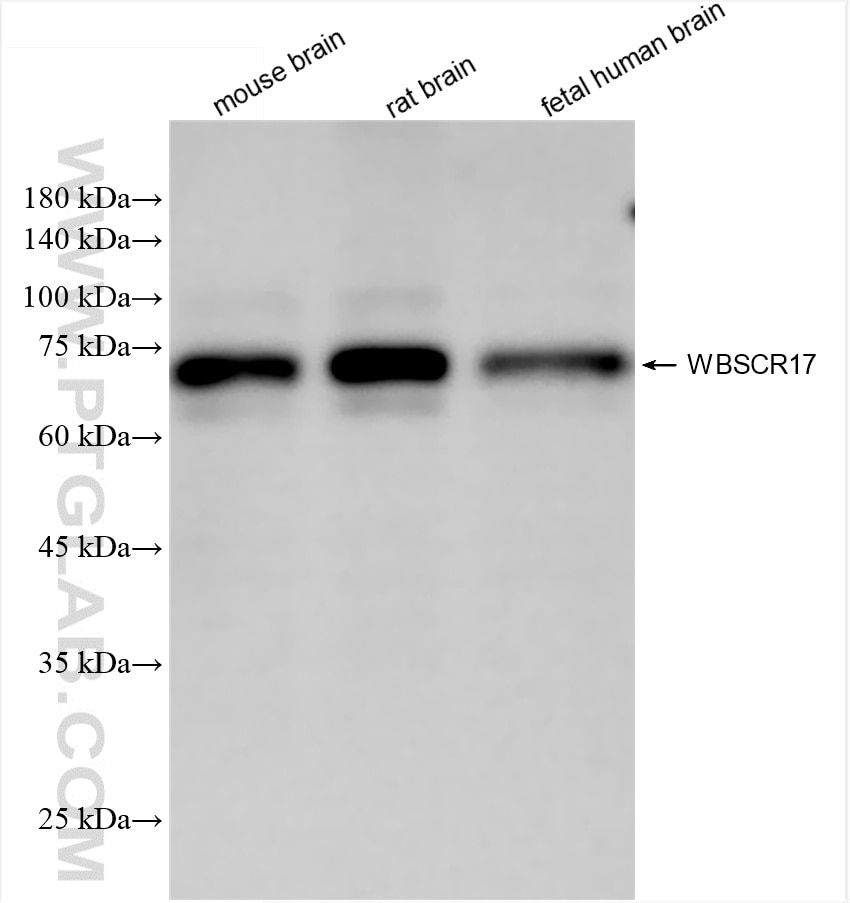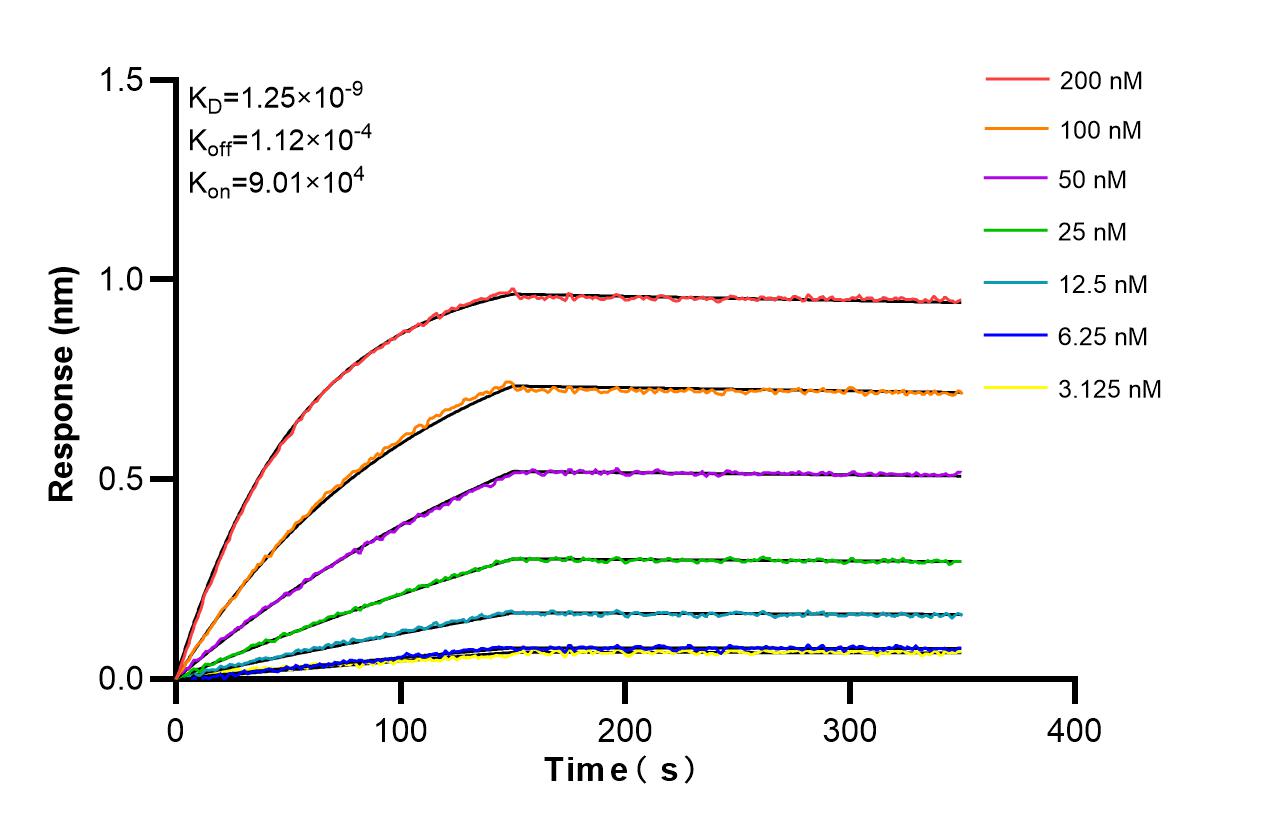Product Information
86351-1-PBS targets WBSCR17 in WB, Indirect ELISA applications and shows reactivity with human, mouse, rat samples.
| Tested Reactivity | human, mouse, rat |
| Host / Isotype | Rabbit / IgG |
| Class | Recombinant |
| Type | Antibody |
| Immunogen |
CatNo: Ag15792 Product name: Recombinant human WBSCR17 protein Source: e coli.-derived, PGEX-4T Tag: GST Domain: 1-126 aa of BC069624 Sequence: MASLRRVKVLLVLNLIAVAGFVLFLAKCRPIAVRSGDAFHEIRPRAEVANLSAHSASPIQDAVLKRLSLLEDIVYRQLNGLSKSLGLIEGYGGRGKGGLPATLSPAEEEKAKGPHEKYGYNSYLSE Predict reactive species |
| Full Name | Williams-Beuren syndrome chromosome region 17 |
| Calculated Molecular Weight | 598 aa, 68 kDa |
| Observed Molecular Weight | 70~90 kDa |
| GenBank Accession Number | BC069624 |
| Gene Symbol | WBSCR17 |
| Gene ID (NCBI) | 64409 |
| Conjugate | Unconjugated |
| Form | Liquid |
| Purification Method | Protein A purification |
| UNIPROT ID | Q6IS24 |
| Storage Buffer | PBS only, pH 7.3. |
| Storage Conditions | Store at -80°C. |
Background Information
WBSCR17, also known as GALNT17, which encodes a brain-expressed N-acetylgalactosaminyl transferase (GalNAcT), is located at the distal edge of a region that is commonly deleted or duplicated in Williams Beuren Syndrome (WBS), a developmental disorder with motor and coordination problems, impaired visuospatial memory, and abnormal social interaction (PMID: 31554716). WBSCR17 loss-of-function has significant effects on cerebellar development, and is associated with phenotypes including developmental delay, deficits in motor coordination, reduced exploratory activity, and impaired social behavior (PMID: 22787146). With the calculated molecular mass of recombinant WBSCR17 being 68 kDa, the 70-90-kDa glycoproteins could also be detected due to post-translational modifications (PMID: 22787146).






